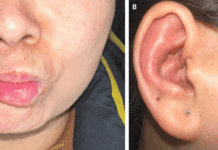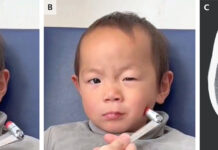Superficial fungal infection of the toenails in an HIV positive patient!
A 40-year-old male presented with complaints of nail changes for the past 2 years. The patient’s history revealed infection with the human immunodeficiency virus for the past 10 years for which he was taking antiretroviral drugs. تعليم القمار
On examination, superficial, opaque, friable, powdery
(talc-like) white patches were noticed over the nail plates of all toes
bilaterally. Direct microscopy with 10% KOH of scrapings from the dorsal nail
plate showed translucent, septate hyphae.
A diagnosis of white superficial onychomycosis was made.
Management:
Itraconazole pulse therapy was initiated, but at the 1-month
follow-up, no improvement was seen in the patient’s nails.
Onychomycosis is a fungal infection of the nail bed, matrix
or plate. Onychomycosis is more often seen on the toenails than the fingernails,
and it comprises one-third of fungal skin infections. Usually, the patients
affected are those above 60 years or those with immunocompromised states such as
seen in this patient with HIV infection. Other causes of onychomycosis include occlusive
footwear, locker room exposure, poor hygiene, layers of toenail polish, which
doesn’t allow the nail to breathe, chronic diseases like diabetes, and vascular
insufficiency.
White superficial onychomycosis (WSO), a less common type of
onychomycosis, is characterized by a superficial localization of fungi on the
dorsal surface of the nail plate. Usually, the nail plate is the primary site
of inoculation. The common culprit fungus of WSO is T. mentagrophytes. Other fungi
include Microsporum persicolor, C. albicans, T. rubrum, Aspergillus terreus,
Fusarium oxysporum, and Acremonium species.
The acceptable management
approach is to mechanically debride the affected area, followed by topical
antifungal agents. Oral antifungals are always more effective than topical
antifungals, and the toenails require a longer duration of therapy than
fingernails.
Can the toenail fungus heal on its own?
It is very rare for onychomycosis of the toenails to heal spontaneously
without treatment. Such fungal infection requires treatment because even if the
old infected nail falls out, there are high chances that the newly growing nail
may get infected with the fungus too.
References:
Shirwaikar AA, Thomas T, Shirwaikar A, Lobo R, Prabhu KS. Treatment of onychomycosis: an update. لعبة قمار Indian J Pharm Sci. 2008;70(6):710-714. DOI:10.4103/0250-474X.49088
Krishnegowda SY, Sudhir KN (2015) Talc, over the Nails. Clin Med Img Lib 1:010. doi.org/10.23937/2474-3682/1510010




